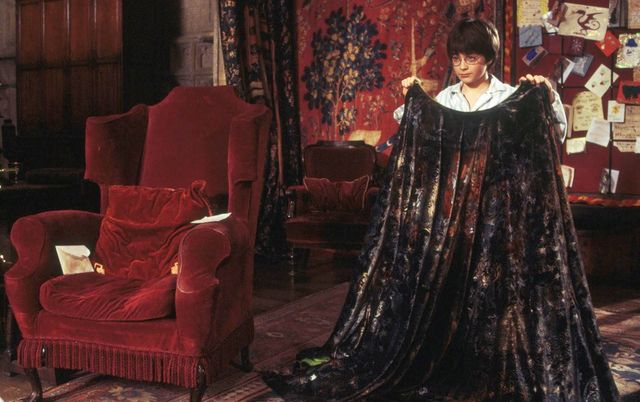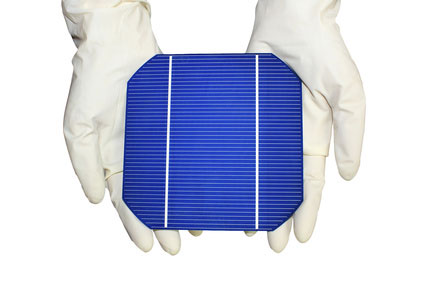
Image credit: http://harrypotter.wikia.com/wiki/Cloak_of_Invisibility
In a development that will bring a smile to the faces of Harry Potter fans, researchers at the Karlsruhe Institute of Technology (KIT) announced this week the success of using invisibility cloaks to improve solar cell efficiency.
While the technology sounds very J. K. Rowling, the benefits of invisibility cloaks for solar cell efficiency — or at least technology that acts very much like invisibility cloaks — are very real.
The breakthrough lies in the fact that solar panels use contact “fingers” — grids and lines that move the electrical current away from the solar cells. Because these points account for around a tenth of the surface of the solar panel, the result is this area is unavailable to harvest energy from the sun. You can see them on a solar cell here:

The vertical and horizontal fingers can make up to 10% of the surface area of a solar cell.
According to study author Martin Schuman:
“Our model experiments have shown that the cloak layer makes the contact fingers nearly completely invisible.”
The “invisibility cloak” modelled by researchers at Karlsruhe, acts to maximise the area covered by the contact fingers, guiding the light around them so they can be absorbed by the solar cells that surround them. Rather than Hogwarts-inspired magic though, the cloak is a sophisticated polymer-based coating, designed on an advanced laser printer, that bends the light to a specific area.
The gain in efficiency is impressive.
“When applying such a coating onto a real solar cell, optical losses via the contact fingers are supposed to be reduced and efficiency is assumed to be increased by up to 10%, added Schumann.
This is potentially a major breakthrough in improvement in solar panel efficiency as light that falls on the contact fingers is not lost. With only an estimated one fifth of the sun’s light being converted into electricity in today’s typical solar panels, the Karlsruhe-developed technology will improve solar cell efficiency by creating more area for the sunlight to fall and be harvested as solar energy.
Invisibility cloaks to improve solar cell efficiency? What next, the Hogwarts School of Photovoltaic Wizardry? I’m sure J. K. Rowling would be proud.

 RSS - Posts
RSS - Posts



So, would that mean panel efficiency increasing from about 20% to about 30%? Or from 20% to about 22%.
Good Point! 20% to 22%